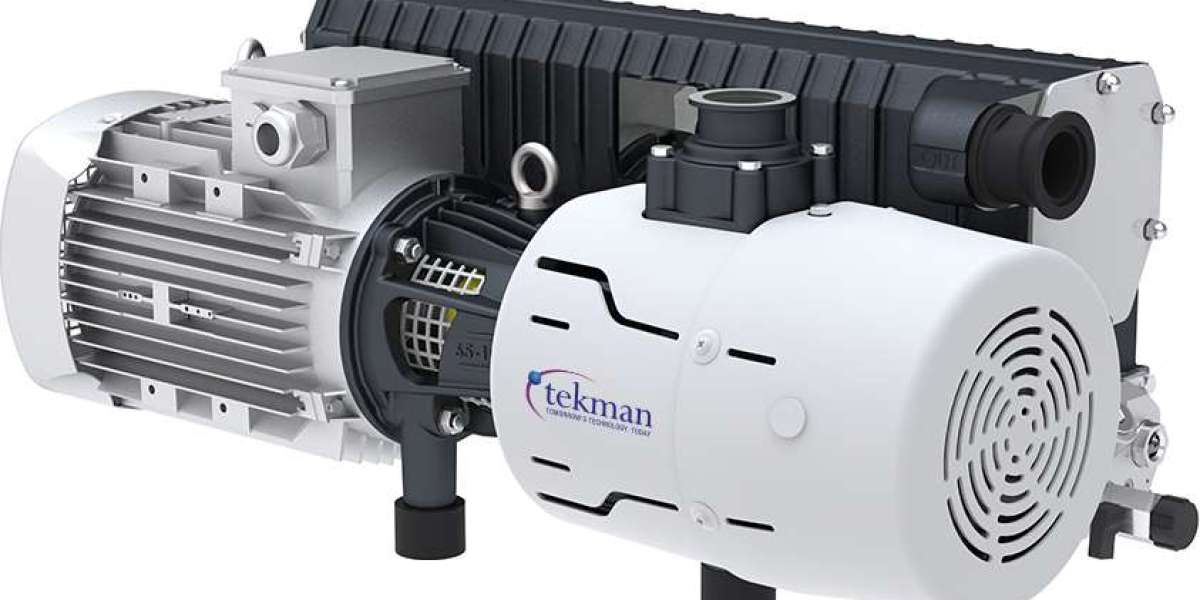The rotary vane vacuum pump is one of the most widely used vacuum technologies across multiple industries, known for its efficiency, reliability, and compact design. From laboratories and food packaging to automotive and industrial processes, this type of vacuum pump is a fundamental component in operations where air and gas extraction is essential. This article delves deep into the working principles, advantages, applications, and maintenance considerations of rotary vane vacuum pumps, providing a thorough understanding of why they are so indispensable.
What is a Rotary Vane Vacuum Pump?
A rotary vane vacuum pump is a positive displacement pump that creates a vacuum by using a series of vanes mounted to a rotor that rotates inside a cavity. As the rotor turns, the vanes slide in and out due to centrifugal force and maintain contact with the inner wall of the pump housing, trapping and compressing air or gas which is then discharged through an outlet.
The operation of this pump is continuous and smooth, making it suitable for applications that require steady vacuum pressure. Rotary vane vacuum pumps can be oil-sealed or dry-running, with oil-sealed versions being more common for high-performance requirements.
How Does a Rotary Vane Vacuum Pump Work?
The working mechanism of a rotary vane vacuum pump can be described in four basic steps:
Intake Phase: As the rotor spins, the volume between the vanes increases, drawing gas into the pump through the inlet.
Compression Phase: As the rotor continues its motion, the gas is compressed between the vanes and the housing wall as the volume decreases.
Exhaust Phase: The compressed gas is pushed towards the outlet valve and expelled from the pump.
Sealing and Lubrication: In oil-sealed pumps, the oil serves to lubricate the vanes and seal the system to prevent backflow of gas.
The efficiency of a rotary vane vacuum pump depends on factors such as rotor speed, vane condition, and the tightness of the seal.
Types of Rotary Vane Vacuum Pumps
Rotary vane vacuum pumps are available in several configurations to meet varying operational needs:
Single-stage rotary vane vacuum pumps: Ideal for applications requiring a moderate vacuum level. They offer a simple design and are cost-effective.
Two-stage rotary vane vacuum pumps: These provide a deeper vacuum by processing the gas twice through two stages. They are used in applications where a higher vacuum is critical.
Oil-sealed rotary vane pumps: These provide excellent sealing and are suited for demanding industrial tasks but require routine oil changes.
Dry rotary vane pumps: Suitable for clean applications where oil contamination is a concern. They are maintenance-friendly and ideal for sensitive environments.
Advantages of Rotary Vane Vacuum Pumps
The popularity of the rotary vane vacuum pump stems from its wide array of benefits, such as:
1. Compact and Space-saving Design
Rotary vane vacuum pumps are compact and can be easily integrated into existing systems without taking up much space.
2. High Efficiency
These pumps offer quick evacuation times and stable vacuum levels, ensuring that industrial processes are not delayed.
3. Low Maintenance
With fewer moving parts and simple mechanics, these pumps are relatively easy to maintain. Oil-sealed models require periodic oil changes, while dry models need vane replacement after prolonged use.
4. Cost-effective
Compared to other vacuum technologies, rotary vane pumps are more affordable in terms of initial investment and operational costs.
5. Versatile Applications
From HVAC systems and automotive braking systems to medical equipment and printing industries, the rotary vane vacuum pump fits a variety of roles seamlessly.
Common Applications
The versatility of rotary vane vacuum pumps allows them to be used in a wide range of sectors. Some of the most common applications include:
1. Medical and Laboratory Use
Rotary vane vacuum pumps are widely used in laboratory environments for filtration, aspiration, and degassing procedures. In medical settings, they are essential in equipment like vacuum-assisted delivery devices and surgical suction systems.
2. Food Processing and Packaging
Vacuum packaging of food items to extend shelf life is one of the major uses of rotary vane pumps. They help remove air from packages, preventing bacterial growth and spoilage.
3. HVAC Systems
In heating, ventilation, and air conditioning systems, these pumps are used for evacuating air from refrigeration systems during maintenance and installation.
4. Automotive Industry
They are integral to manufacturing processes such as vacuum infusion, brake line evacuation, and air conditioning system servicing.
5. Printing and Paper Handling
Rotary vane vacuum pumps are used in offset printing machines, paper feeders, and collators to ensure proper handling and alignment of materials.
6. Plastics and Composites
Vacuum forming and resin infusion processes in the plastics and composites industry rely heavily on rotary vane vacuum pumps for creating molds and removing air bubbles.
Maintenance and Troubleshooting
While rotary vane vacuum pumps are relatively low maintenance, regular checks and servicing are essential for optimal performance:
1. Oil Checks and Changes
For oil-sealed pumps, the oil needs to be changed at regular intervals to prevent contamination and ensure proper sealing.
2. Vane Inspection
Vanes are subject to wear and tear over time and should be inspected for smooth movement and replaced when worn out.
3. Filter Replacement
Intake and exhaust filters should be cleaned or replaced to maintain airflow and prevent dust or particulates from entering the system.
4. Leak Detection
Checking for system leaks helps maintain vacuum levels and reduces energy consumption.
5. Noise and Vibration Monitoring
Unusual sounds or vibrations can indicate internal issues such as worn bearings or misaligned parts.
Environmental Considerations
Rotary vane vacuum pumps can be environmentally friendly if maintained properly. Oil mist filters and condensate traps can be used to prevent oil emissions and manage waste efficiently. Dry models eliminate the need for oil disposal altogether, reducing the environmental impact.
Choosing the Right Rotary Vane Vacuum Pump
When selecting a rotary vane vacuum pump for your application, consider the following:
Required vacuum level and flow rate
Nature of the gas being handled
Operating environment (cleanroom, industrial, etc.)
Oil-lubricated vs. dry configuration
Maintenance intervals and service availability
Budget and energy efficiency
Final Thoughts
The rotary vane vacuum pump continues to be a trusted and indispensable solution across numerous industries. Its simple design, reliability, and performance efficiency make it ideal for a broad spectrum of vacuum applications. Whether you're seeking a vacuum solution for food packaging, laboratory operations, or industrial manufacturing, the rotary vane vacuum pump offers a versatile and cost-effective option.
Understanding its working principles and proper maintenance routines ensures long-term performance and reduced downtime. As industries continue to evolve, the role of the rotary vane vacuum pump remains foundational in achieving efficient and effective vacuum systems.



